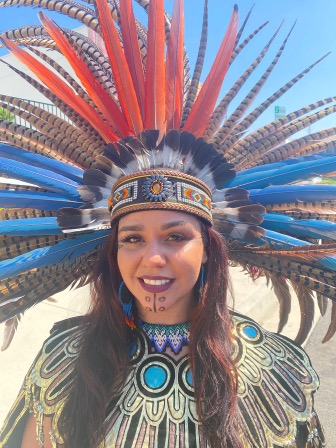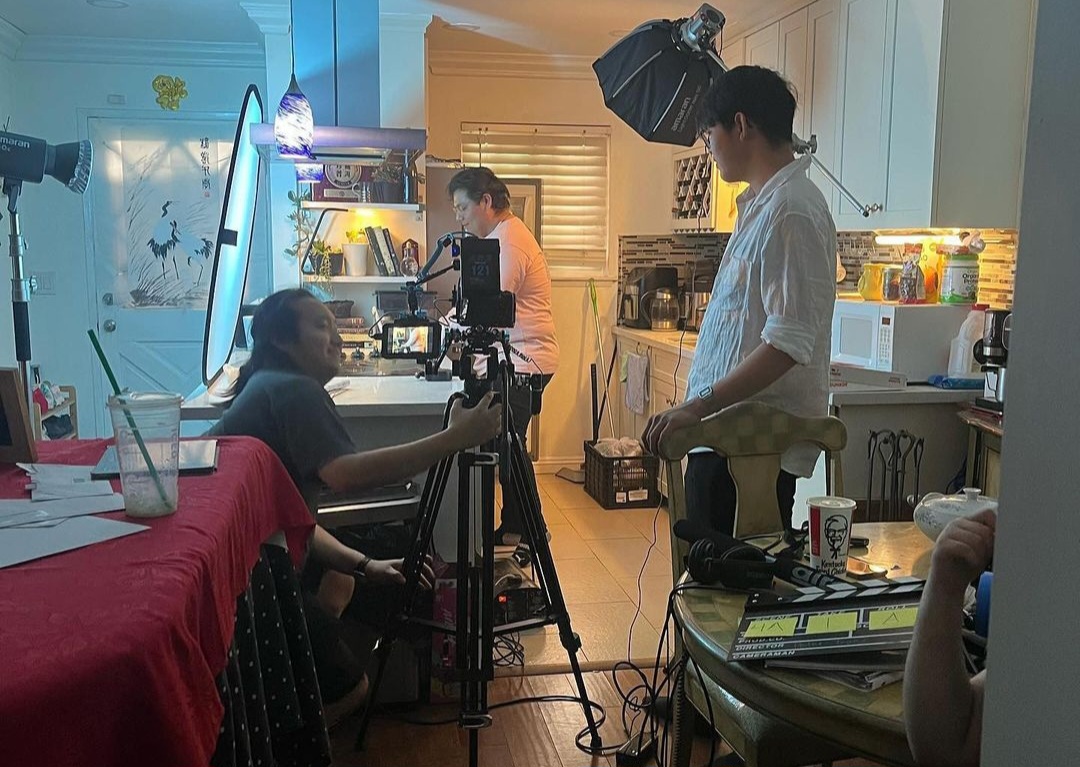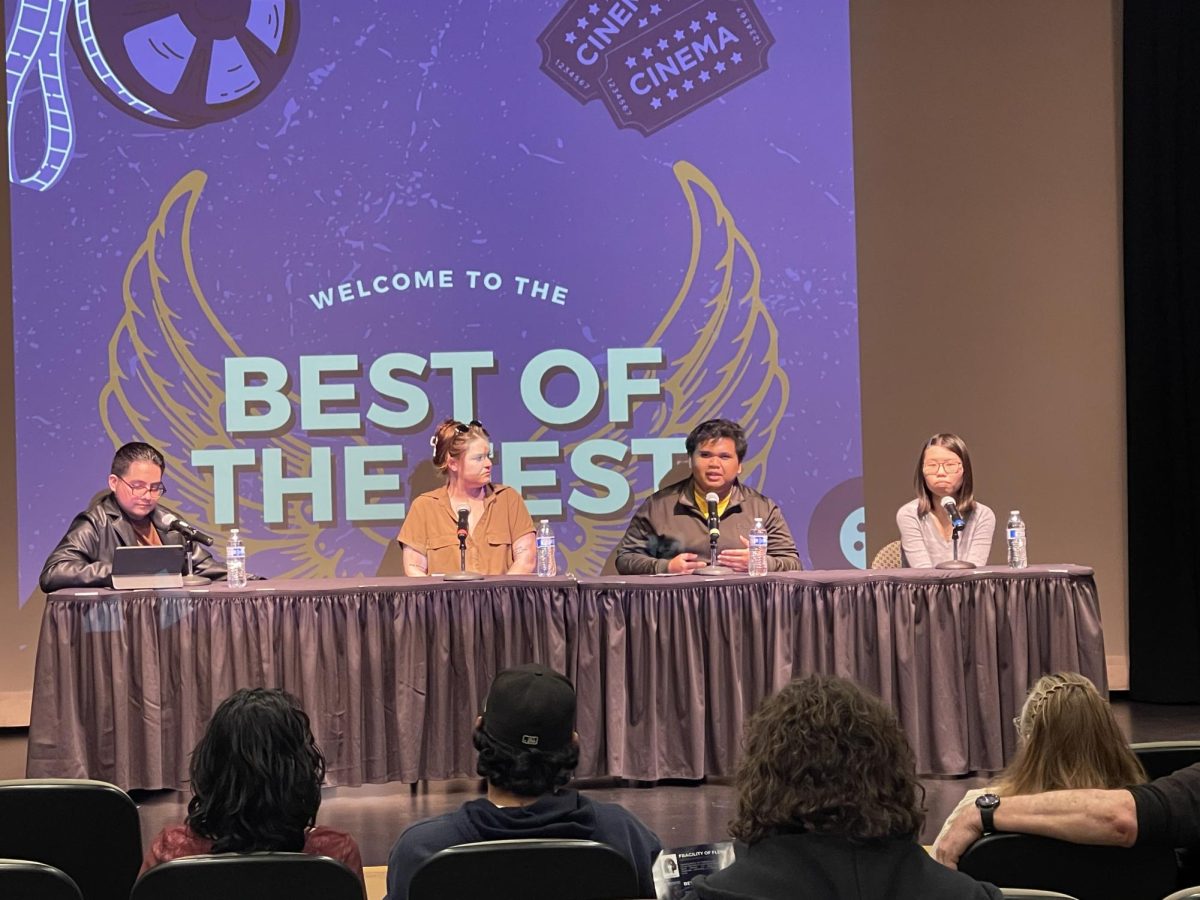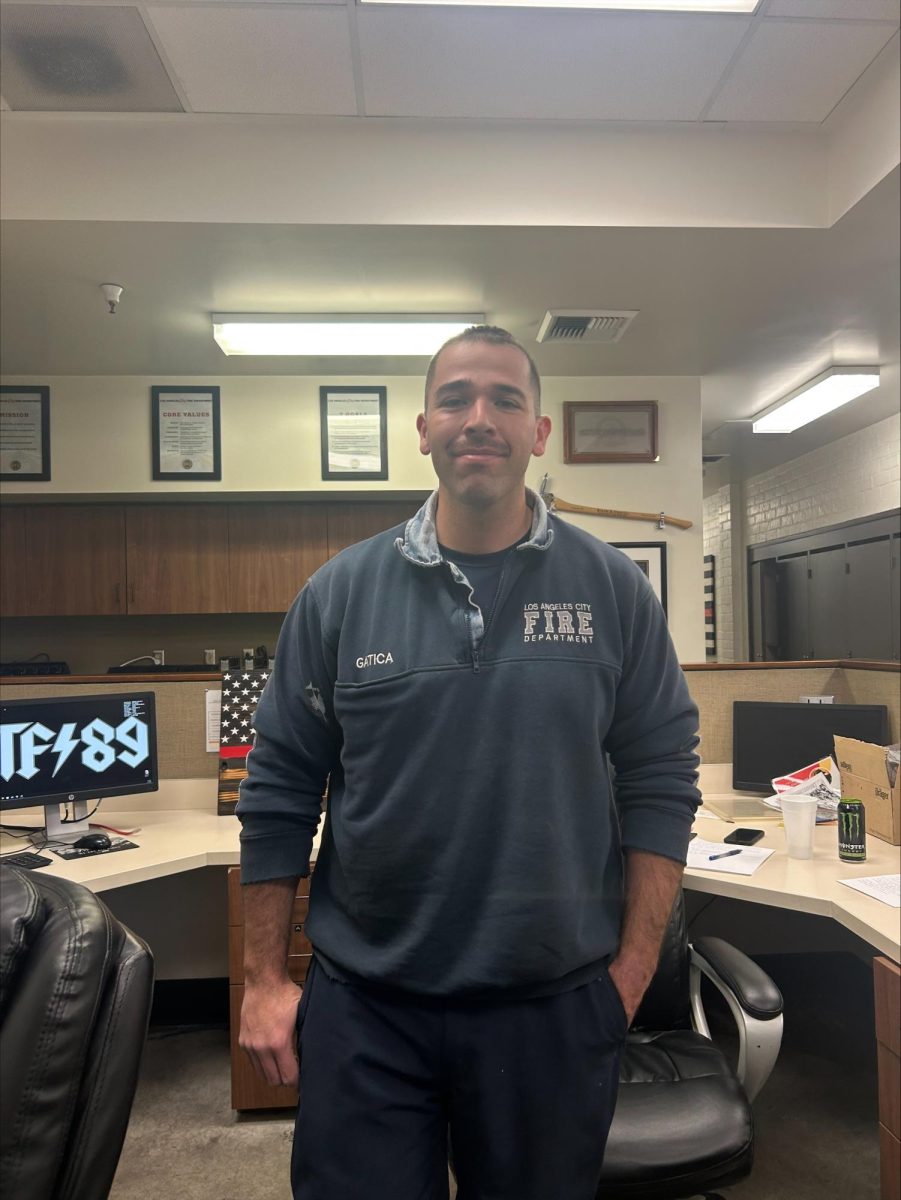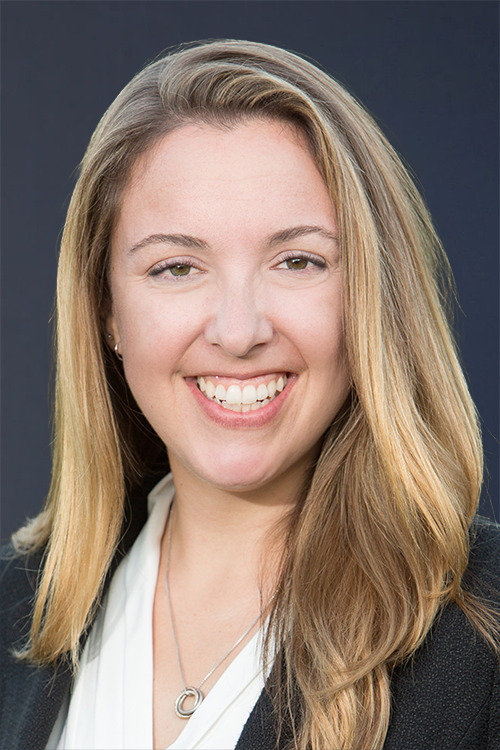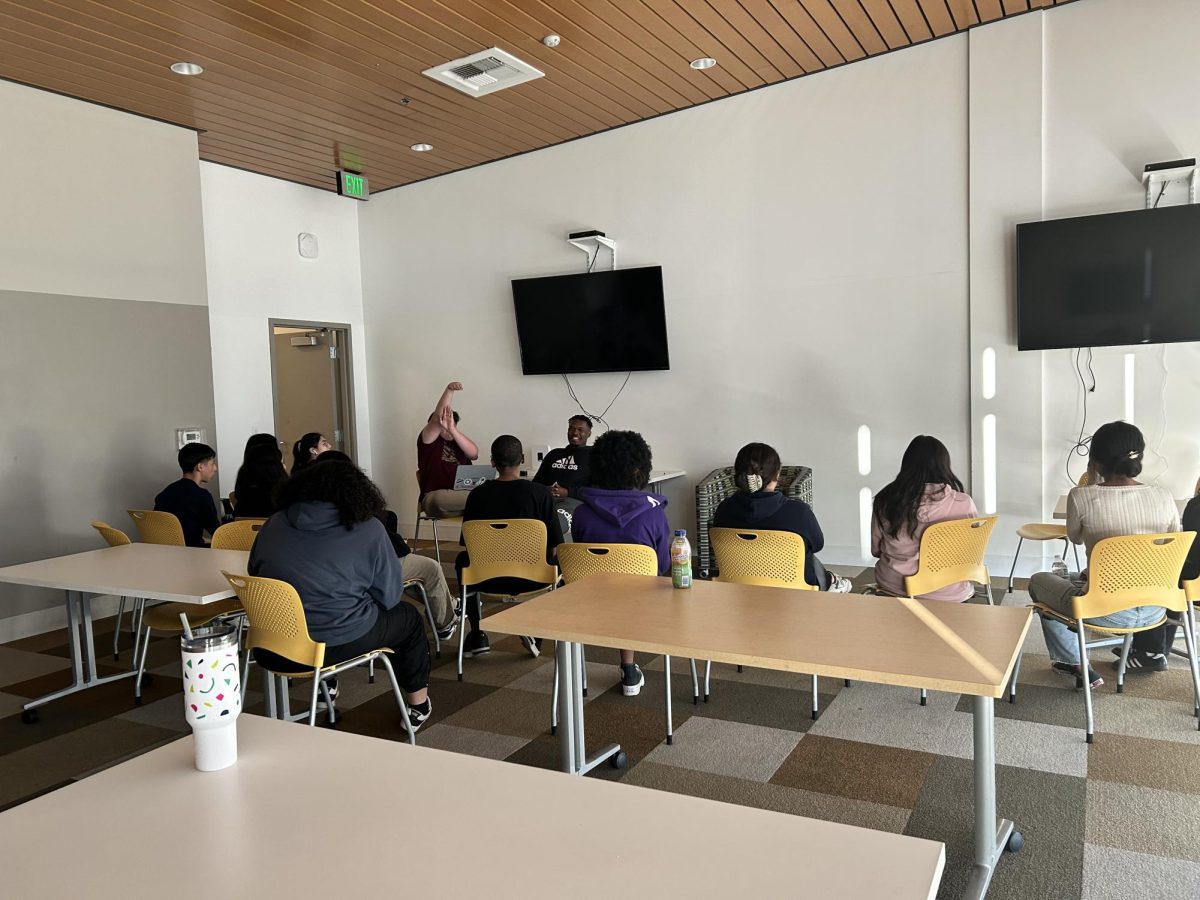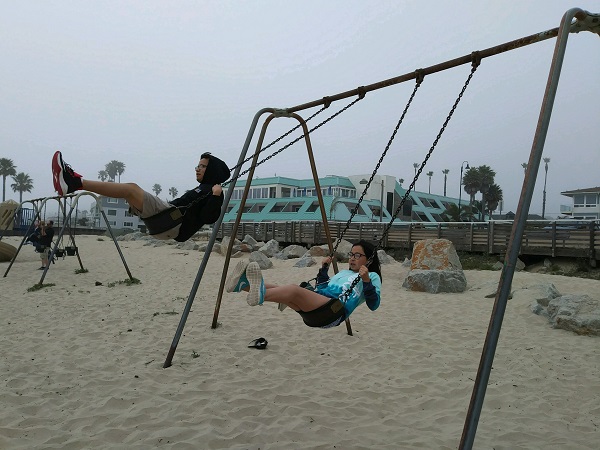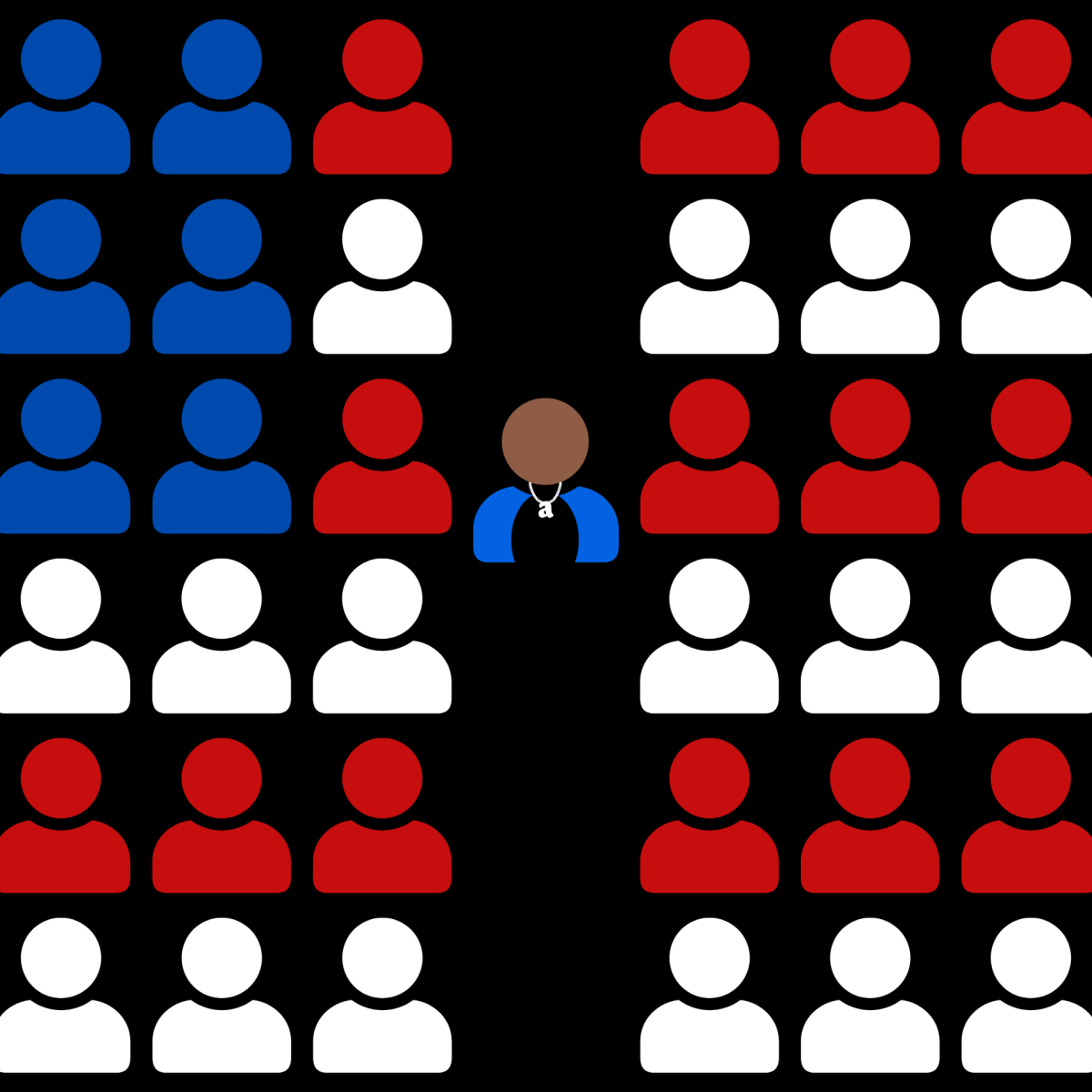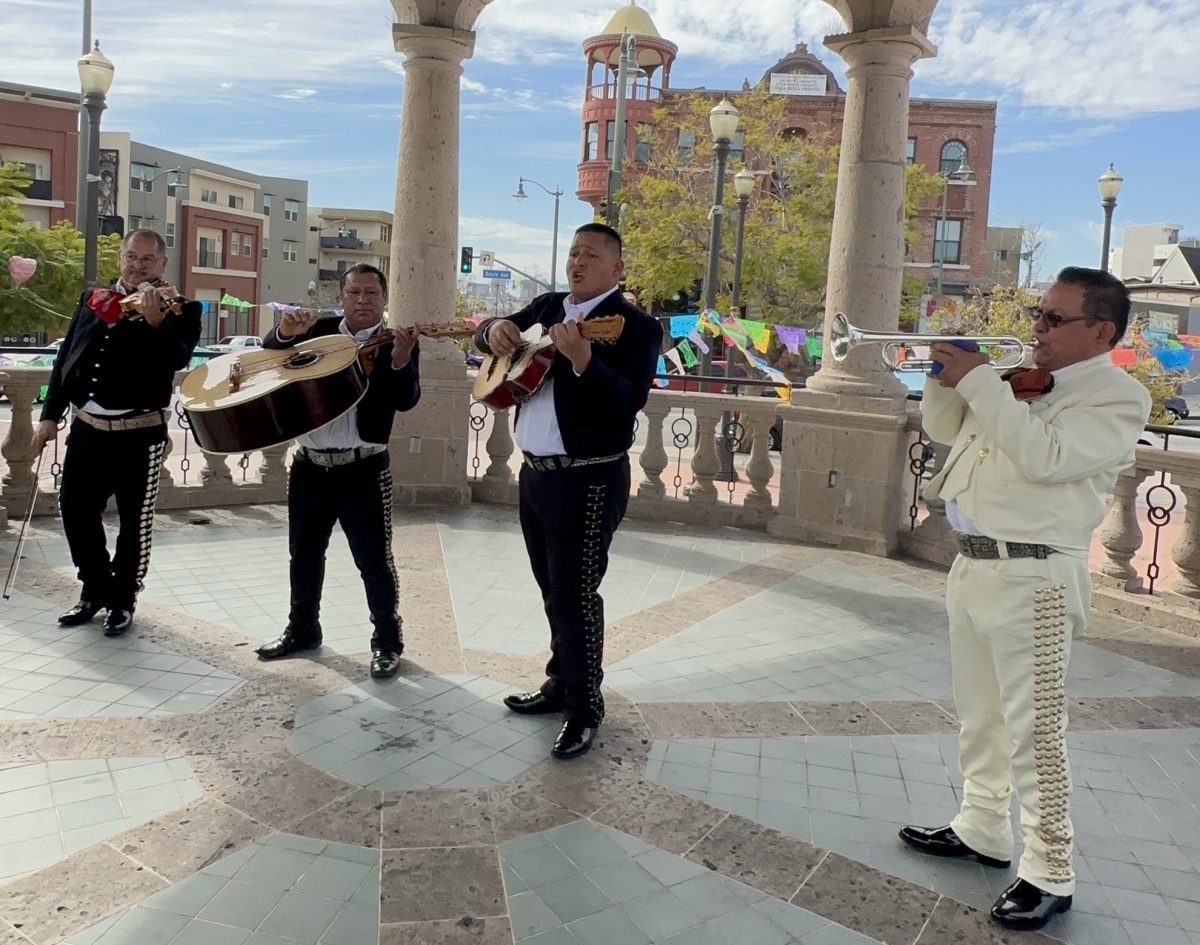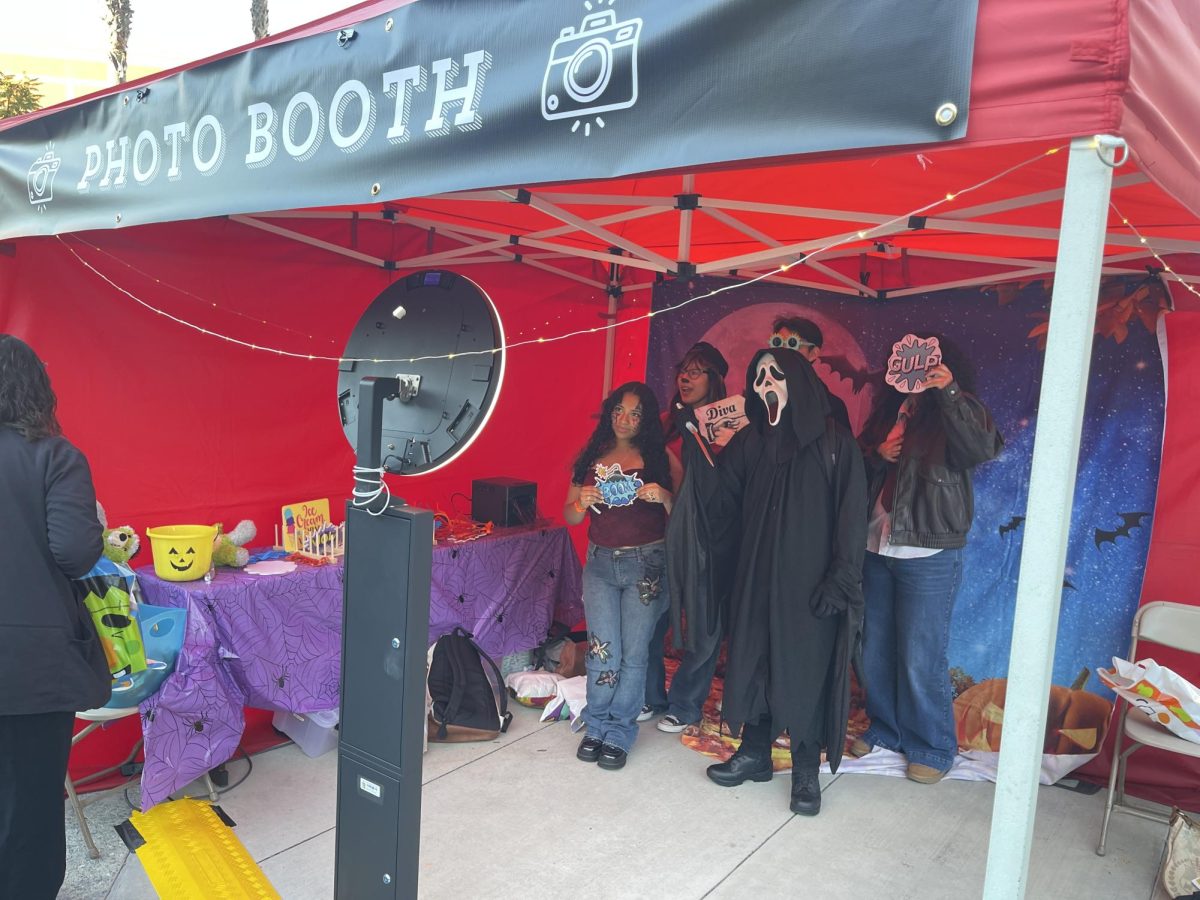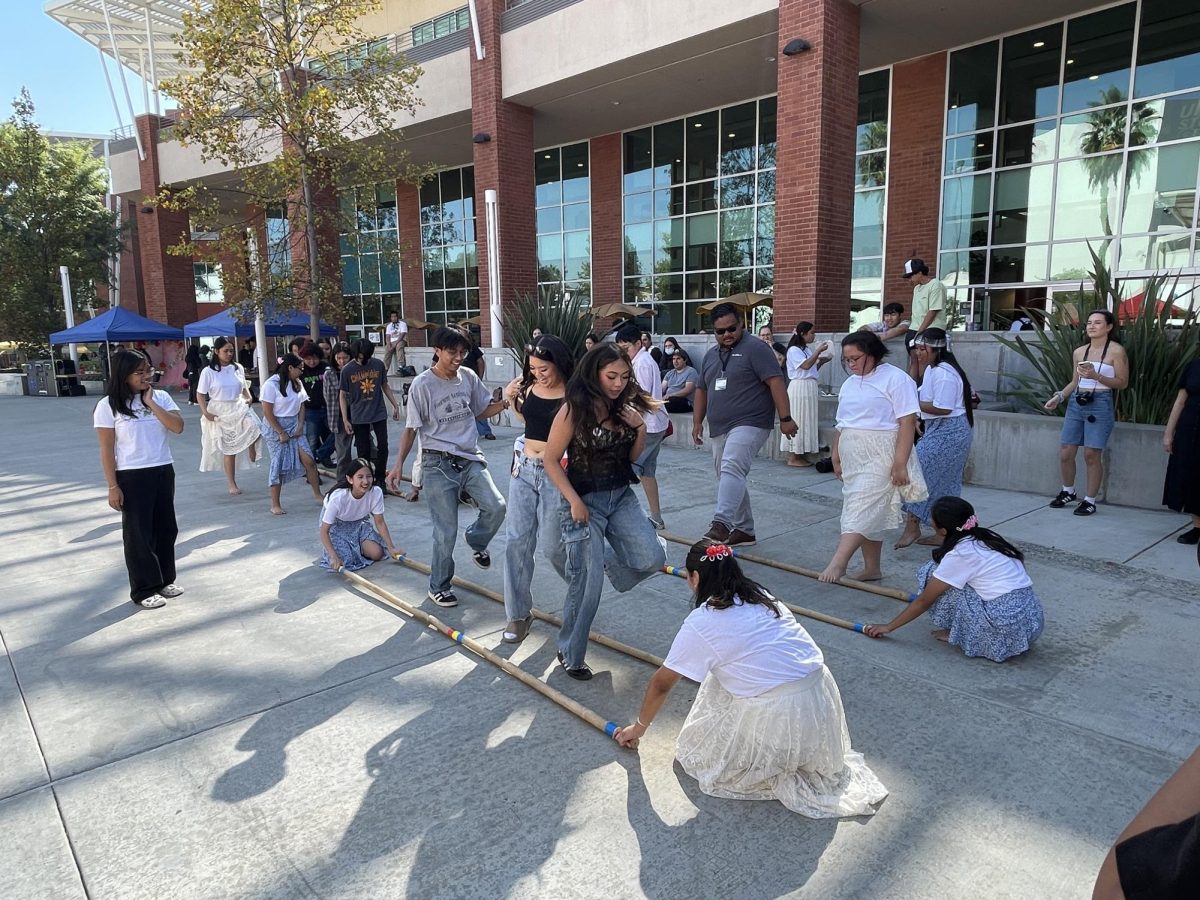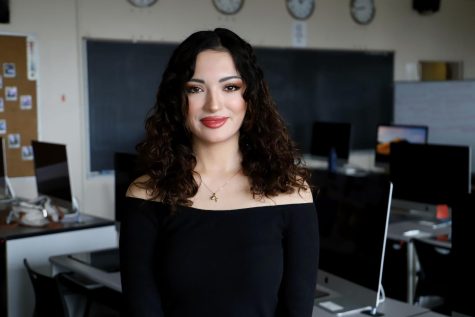Aztec dancing. Salsa and Bachata music. An ofrenda for Día de los Muertos, or Day of the Dead. And lots of food: Papusas, elotes, agua frescas and churros.
These were some of the highlights of Fiesta Alhambra, an annual event in September in collaboration with Alhambra’s Certified Farmers Market to celebrate and honor Latino and Hispanic Heritage Month. Many of the hundreds of attendees paused from the festivities to write the name or memory of loved ones for the event’s “Community Ofrenda.”
“It’s a time for celebrating and thanking our Latino community for the contributions they have given our country,” said Alhambra city council member Adele Andrade-Stadler, who said the event has happened for at least as long as she has lived in the city — about 31 years.
Andrade-Stadler said her grandmother was born in Chihuahua, Mexico, and her grandfather was born in Arizona. She said they did very well raising their families in Monterey Park, California.
“[My grandmother] crossed a border that really was not a border at that time and had 14 children in a small copper mining town called Clifton, Arizona,” said Andrade-Stadler. “They all, like most Latinos, gave back to their country because my grandfather said ‘you will give back to your country in a variety of ways,’ and we did just that.”
In fact, all eight of her uncles served in the military, her aunt served as a marine and her mother was a cadet nurse. Andrade-Stadler’s way of giving back is serving on the council.
Evonne Tonantzin Esparza gives back to her community through performances, as a member of her family’s Aztec dance group, the Yankuititl.
Tonantzin Esparza said she’s thankful events like the one in Alhambra provide venues for raising awareness about her traditions because “it feels here, especially in the United States, that our culture kind of gets portrayed in the wrong” way when in reality, it is “a rich, artistic, smart and intelligent culture.”
“I am proud of our nobility, our integrity, our hard work, the deep spiritual aspect of us and I am proud of the caring and compassion that we have,” she said.
The dancers practice for two hours each Wednesday morning and perform around the county, upholding their traditions through dance and art. It is a lifestyle.
Tonantzin Esparza and her family started doing performances at this event years ago in honor of Mexican heritage month. The group’s name, Yankuititl, means “New Fire” in their native Aztec language. The group started in the early 1990s by her father, Felipe Esparza, and now is run by his wife and daughter.
“I was born into this. I was baptized in an Aztec ceremony. I am a second generation dancer,” Tonantzin Esparza said.
Tlalla Esparza, another member of the group, started dancing at age 3.
“It takes lots of practice, we have to make sure our members are consistent with practicing and learning” the indigenous ways,” Tlalla Esparza said. “I feel a person isn’t prepared until two years and then, that’s when they are aware of how to dance, perform or put feathers in the headdress, but I feel it takes 10 years to really understand this tradition.”
Community News produces stories about under-covered neighborhoods and small cities on the Eastside and South Los Angeles. Please email feedback, corrections and story tips to [email protected].

